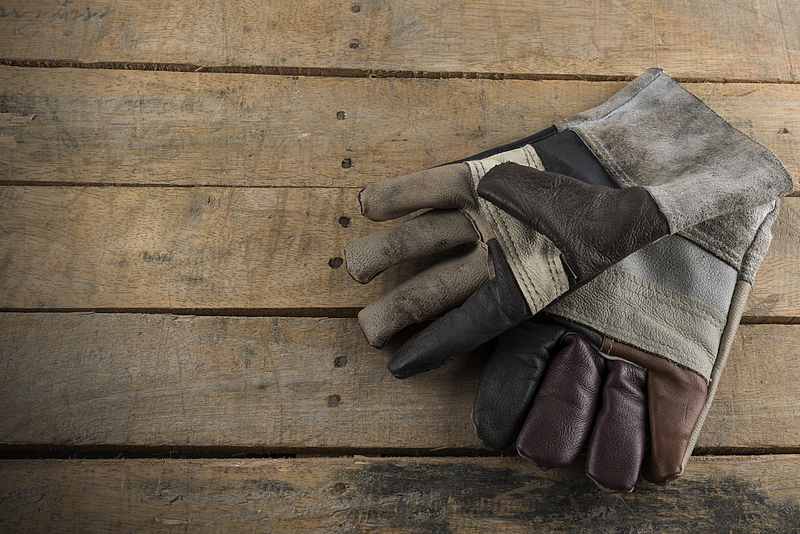How to Prepare Your Space for Lifting Heavy Objects Alone
Lifting heavy objects by yourself can be daunting and even dangerous if not done correctly. Whether you're rearranging furniture, moving boxes, or handling construction materials, proper preparation of your space is crucial for both safety and efficiency. This comprehensive guide explains how to prepare your space for lifting heavy objects alone and highlights essential tips, techniques, and precautions to ensure a smooth and injury-free experience.
Why Proper Preparation Matters
Before you grab that bulky sofa or stack of boxes, consider:
- Minimizing the risk of injury to your back, shoulders, and limbs
- Protecting your floors, walls, and other belongings
- Saving time by reducing obstacles and streamlining the moving process
- Ensuring you have the right tools and techniques to work smarter, not harder
In short, good preparation means:
- Fewer accidents
- Less stress
- A faster, safer move

Step 1: Assess the Object and the Environment
Know What You're Lifting
- Weight estimation: Can you realistically lift and carry the item alone? Many manufacturers or product manuals provide weight information.
- Shape and size: Is the object awkwardly shaped or too large to fit through doors or corridors?
- Potential hazards: Are there sharp edges, slippery surfaces, or protruding components?
Scan Your Space
- Measure doorways, halls, and tight spots
- Identify obstacles like rugs, cables, or pets that could cause slips or trips
- Plan the safest path from start to finish
Tip: Take photos or notes for reference if the path has tricky spots!
Step 2: Clear and Prepare the Path
Remove Potential Hazards
- Push furniture and other objects against the wall or out of the room
- Roll up rugs and runners that could bunch up underfoot
- Tape down loose wires or move electronic cords out of the way
- Secure or lock pets in another room until you're done
Ensuring a clear, unobstructed path is essential for safely carrying heavy loads by yourself.
Protect Your Home
- Lay down moving blankets or cardboard to shield floors
- Use corner guards to protect walls and doorframes from bumps
- Cover the object with padding to prevent scratches and dings
Prepare Staging Areas
- Identify places to set the item down for a rest if the path is long
- Keep the destination area empty and ready for the object
The fewer obstacles you encounter, the safer and smoother your solo heavy lifting will be.
Step 3: Gather Essential Tools and Equipment
Don't try to be a hero - let tools do the heavy work!
Recommended Lifting Aids
- Dollies and hand trucks: Absolutely essential for large items like appliances and furniture
- Furniture sliders: Allow you to push heavy furniture across carpet or hardwood with minimal effort
- Lifting straps: Transfer load from your back to your legs, letting you lift safely
- Gloves with good grip to protect your hands and improve hold
- Back support belt for added safety, especially with repetitive lifts
- Ramps (for stairs and elevation changes)
Tool Checklist for Solo Lifters
 Dolly or Hand Truck
Dolly or Hand Truck Heavy-duty Gloves
Heavy-duty Gloves Lifting Straps
Lifting Straps- Moving Blankets
- Measuring Tape
- Furniture Sliders
Step 4: Plan Your Lifting Technique
Ergonomics is Key
- Do not rush. A moment of planning avoids serious injury.
- Position yourself close to the object to maintain balance
- Bend at the hips and knees, not your back
- Keep your back straight and look forward
- Hold the object close to your body to improve leverage
- Lift with your legs, not your back muscles
- If the object is wider than your shoulders, ask: Can you disassemble it?
- For very large items, use the "push and slide" method on hard surfaces with sliders or blankets
Avoid twisting your torso while carrying a heavy item. Instead, take small steps and turn using your feet.
Demo: The Safe Solo Lift
- Stand with feet shoulder-width apart and knees bent.
- Squat down, keeping your spine straight.
- Grip the object firmly on opposite sides (or use handles if available).
- Tighten your core and use your leg muscles to lift gradually in a smooth movement.
- Hold the object close to your body at waist height.
- Move slowly, scanning the path as you go.
Always set the object down by bending at the knees, not by leaning or dropping it.
Step 5: Communicate and Prepare for Emergencies
Let Someone Know
- Even when lifting heavy objects alone, tell a friend, neighbor, or family member what you're doing and when to expect a check-in.
- Keep your phone accessible in case you need to call for help.
Pro Tip: Activate your phone's voice assistant (e.g., "Hey Siri" or "OK Google") for hands-free emergency dialing.
Prepare First Aid
- Keep a first aid kit nearby.
- Familiarize yourself with basic first aid for strains, sprains, and minor injuries.
Step 6: Optimize the Environment for Safety
Lighting
- Ensure the space is well-lit to spot hazards and see your path clearly.
- Use portable lamps or high-powered flashlights if necessary.
Temperature Control
- Heavy lifting can be physically demanding--ventilate the area or use fans if it's hot.
- Dress in breathable, non-baggy clothing to avoid tripping or overheating.
Floor Conditions
- Wipe up any spills so surfaces are dry and slip-free
- Remove small objects, toys, or debris from the pathway
Step 7: Disassemble and Downsize When Possible
Make Each Load Lighter
- If you're moving a large furniture piece, remove drawers, shelves, or legs if possible
- Empty out dressers and closets to reduce unnecessary weight
- Carry items in smaller, manageable parts, making multiple trips if needed
- Label and store screws or bolts safely for easy reassembly later
*This step is crucial--never try to move what you can't lift comfortably by yourself!*
Step 8: Use Proper Lifting Techniques for Specific Objects
Lifting Boxes
- Keep boxes light--never pack more than 40-50 lbs per box
- Grip from the bottom (not by flaps) for stability
Lifting Furniture and Appliances
- Use a dolly, especially for refrigerators, washers, or heavy tables
- Wrap and secure with straps to avoid slipping during maneuvering
- Lift from secure anchor points--not moving parts like doors or handles
Moving Items Up or Down Stairs
- Use a stair-climbing dolly or drag items up a blanket for smaller loads
- Take one step at a time and maintain three points of contact
- Pause and rest frequently
Step 9: Take Care of Your Body
Warm Up Before Lifting
- Stretch your legs, back, shoulders, and arms to prevent muscle strains
- Start with light activity to get your blood flowing
Hydrate and Rest
- Drink water before, during, and after strenuous activity
- Take breaks--lift, rest, repeat instead of powering through
Your body is your most important equipment: treat it with care!
Bonus: Tips for Special Scenarios
Lifting in Small or Tight Spaces
- Measure first! Only attempt if space allows you safe leverage
- Remove doors if necessary or feasible
Lifting Outdoor Materials (Gravel, Soil, Lumber)
- Use wheelbarrows for loose materials
- Wear sturdy boots and gloves for extra traction and grip
Common Mistakes to Avoid When Lifting Heavy Objects Alone
- Ignoring pain signals--stop if you feel discomfort!
- Trying to lift more than you can safely manage
- Rushing the process or omitting safety steps
- Twisting your back or overreaching
- Carrying objects with wet or weak grip
- Forgetting to take breaks
Remember: There's no shame in asking for help if something is too heavy or unwieldy.

Frequently Asked Questions on Preparing for Solo Heavy Lifting
Do I need professional help to move very heavy items?
If the object is too heavy, valuable, or hazardous, it's wise to hire professionals with the experience and specialized equipment.
What should I do if I injure myself while lifting alone?
Stop immediately, assess the injury, and seek medical attention if pain persists. Never try to "walk it off" if you sense a serious strain or back injury.
Are there any types of heavy objects I should never lift alone?
Yes. Extremely heavy safes, piano, large appliances, and fragile antiques are better left to teams of movers or professionals. Prioritize your safety!
Conclusion: Smart Preparation Makes Solo Heavy Lifting Safer and Easier
Knowing how to prepare your space for lifting heavy objects alone is essential for anyone looking to move, renovate, or reorganize. By following the steps outlined above--from assessing your environment, clearing paths, gathering tools, planning your technique, and maintaining personal safety--you can significantly reduce the risk of injury and make the whole process much less stressful.
Always remember:
- Think safety first
- Use the right tools
- Work at your own pace
- Ask for help when needed!
Lifting heavy items solo doesn't have to be an ordeal. With careful planning and preparation, you can protect yourself and your space, ensuring both your comfort and efficiency. Happy lifting!



